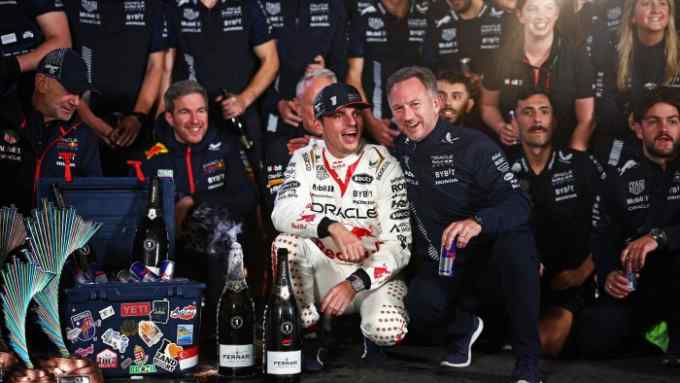McLaren chief warns of F1 cost-cap rules inhibiting much needed tech investment

Roula Khalaf, Editor of the FT, selects her favourite stories in this weekly newsletter.
Zak Brown was arguably the biggest advocate of the crackdown on profligate spending by Formula One teams. But, two years after F1 implemented spending controls on teams, the McLaren Racing chief says the sport needs some leeway to invest in sustainability.
“Sustainability’s not a competition,” Brown tells the Financial Times. “It’s something we all need to hold hands together on.”
Brown says there are multiple facets to achieving sustainability, such as McLaren’s own use of recycled carbon fibre on its F1 cars.
However, a major problem arises when conflicting goals lead to a trade-off that damages the sport’s ability to be environmentally friendly. Efforts to ensure teams are financially sustainable have limited what they can spend to achieve this aim, says Brown.
F1 and the sport’s governing body, the Fédération Internationale de l’Automobile (FIA), introduced spending controls in 2021 as teams struggled in the wake of the coronavirus pandemic, which battered their revenues. The financial regulations were also intended to increase competition by preventing the big teams from outspending rivals.
Brown, who has led McLaren since 2016, still backs the cost cap but wants to ensure that teams can invest in technology to achieve sustainability. He says the team has been working closely with the FIA to ensure that the cost-cap rules do not discourage such investment.
“We do think there are areas that will not necessarily put performance on the race car today, but areas we want to invest in to be more sustainable down the road,” says Brown.
As the first team to introduce a carbon-fibre chassis to F1, more than 40 years ago, McLaren has been experimenting with technology to recycle the material, in conjunction with specialist V Carbon.
Recycled carbon fibre cuts the carbon footprint of the manufacturing process of its F1 cars, according to McLaren. The team used recycled carbon fibre in its cars for the first time last month, at the US Grand Prix in Austin.
McLaren also aims to cut its own greenhouse gas emissions by 50 per cent by 2030, with net zero targeted a decade later. The team is working with consultancy Deloitte on its sustainability strategy.
In May, McLaren said it had cut greenhouse gas emissions by 22 per cent across its racing teams since 2019 and reduced waste by a fifth since 2021. Formula One, the sport’s owner, aims to achieve net zero by 2030.
The sport has already reduced the amount of freight it ships around the world by switching to remote broadcast operations. It was also bring in sustainable fuels under new engine regulations that come into force in 2026.
However, much of F1’s carbon footprint comes not from the cars but from moving from place to place on a busy schedule.
Travel and logistics are the sport’s “biggest challenge” in becoming more sustainable, says Brown. F1 has expanded its schedule for the 2024 season to 24 grands prix around the world — one more than the current season of 23 races.
The calendar now includes three races in the US, multiple stops in the Middle East, races in Asia, and in the sport’s European heartland. Next year’s calendar begins in Bahrain and Saudi Arabia, before heading to Australia, Japan, China and then Miami. It shifts to Europe for two races, then to Canada, before returning to Europe for seven consecutive Grands Prix, in a move to limit the number of times the teams leap from continent to continent. The races then move to Azerbaijan and Singapore before four races in the Americas and the final two events in Qatar and Abu Dhabi.
Brown says that the sport draws up the calendar with sustainability in mind — and emphasises the need for the travel and logistics industry to shift to sustainable fuels. However, he points out that there are often constraints on the calendar due to other sporting events and local holidays.
Where possible, he says, McLaren sends components by boat rather than plane. The team also eschewed planes for the 2022 Belgian Grand Prix, opting to travel via Eurostar and Eurotunnel.
However, although this cut carbon emissions and saved £19,000, it was time-consuming and the trade-off was team members’ wellbeing, according to McLaren’s sustainability report.
“Almost half our carbon footprint is flying around the world,” Brown says. “So [the question is] how can we do that more efficiently?”

Comments